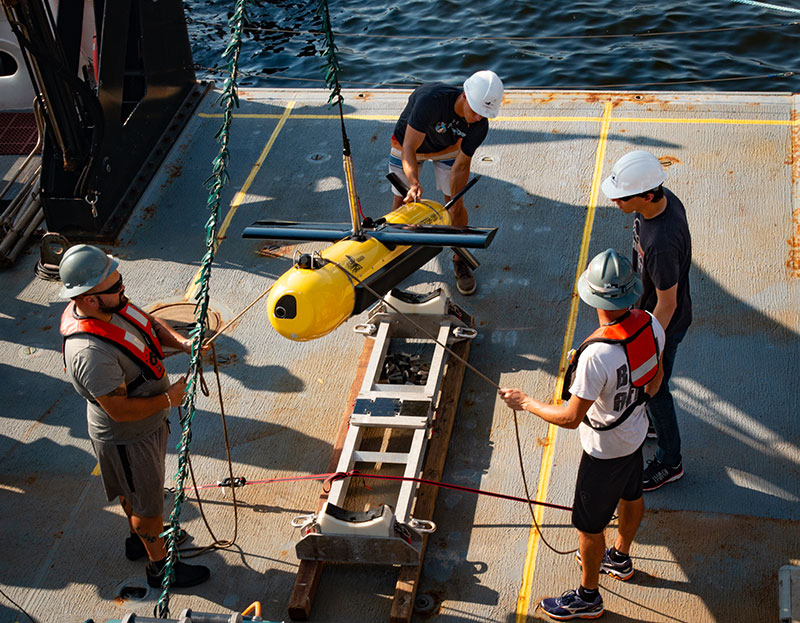
by Tony Lyons, Ph. D., Research Professor, Center for Coastal and Ocean Mapping, University of New Hampshire
July 18, 2019

The Kraken towed KATFISH™ with Synthetic Aperture Sonar (SAS) on the deck of NOAA Ship Okeanos Explorer. The KATFISH is one of the tools we are testing during the 2019 Technology Demonstration. Image courtesy of the NOAA Office of Ocean Exploration and Research, 2019 Technology Demonstration. Download larger version (jpg, 10.0 MB).
Synthetic aperture sonar (SAS) has matured substantially over the last decade and is quickly becoming a major tool for seabed imaging and mapping, providing very fine resolution and high image quality. SAS offers dramatically improved image resolution over traditional side-scan sonar imaging systems by utilizing the movement of the sonar with respect to the seafloor.
Due to diffraction, a smaller aperture (the physical length of the sonar array as compared to the acoustic wavelength), such as the kind that could fit on the side of an autonomous underwater vehicle or tow body, will produce a wide beam that increases in size as it propagates further away from the sonar, towards the seafloor. The wider the beam is on the seafloor or object of interest (a shipwreck, for example), the more difficult it is to discern fine details of the seafloor or object.
In order to improve resolution, a much larger sonar array would have to be used to generate a narrower beam, thus making it easier to distinguish seafloor or object features. If a sonar platform is moving with respect to the seafloor, many acoustic pings can be transmitted and received before processing these returns. After collecting a large number of pings from a moving sonar platform, all of these acoustic returns are combined together by coherently summing the returned waveforms, forming a very long ‘synthetic’ array.
The synthetic array, which can be tens or hundreds of times longer than the original physical array, can generate sonar images with resolution on the order of a centimeter out to hundreds of meters (note that this increase in resolution is in the direction the sonar traveled and increased range resolution is obtained by using larger bandwidths).